Making Risotto alla Milanese for Monza
Welcome to Grand Prix Gastronomy! This week, I’m making risotto alla milanese to celebrate the Italian Grand Prix in Monza.
This project is pretty simple. As a complement to each race weekend, I’ll be cooking the national dish of that race’s host country and sharing information about the process and that dish’s history along the way in an effort to grow more deeply immersed in the local culture from my own home.
What Is Risotto alla Milanese?
Monza is located near Milan, which makes the Italian Grand Prix a great opportunity to explore the cuisine of one of Italy’s most incredible cities — and, arguably, its cultural capital. It’s one of those cities that can get swept up in the latest culinary fads, so if you — like me — take to Google to unearth the region’s local flavors, you’re likely to be recommended a list of the latest “it" restaurants.”
Thankfully, one dish does stand out: risotto alla milanese, or risotto prepared Milan-style. If you see the phrase “alla milanese,” it likely means that it’s been prepared with saffron — and this dish certainly is.
Milan is surrounded by rice fields, so it makes sense that you’ll find a rice-based dish as one of the area’s classic meals. (Selfishly, I was also hoping that risotto would end up being one of the regional specialties for the two Italian regions, so I was absolutely delighted with this.)
I didn’t just want any old risotto, though; I wanted a more substantial dish, which is why I’ve settled on risotto all milanese con luganega — a saffron risotto made with pork sausage. This transforms the delicate saffron rice into something heartier and more substantial — and even more delicious.
This Week's Recipe
I opted for a recipe from Antonio Carluccio, an Italian chef nicknamed the “godfather of Italian gastronomy.” His recipe seemed like a fairly safe way to go when it came to crafting a regional delicacy.
To make an already substantial dish even more well rounded, I decided I wanted to serve my risotto with a regional bread — in this case, pane Pugliese — and a tasty antipasto salad.
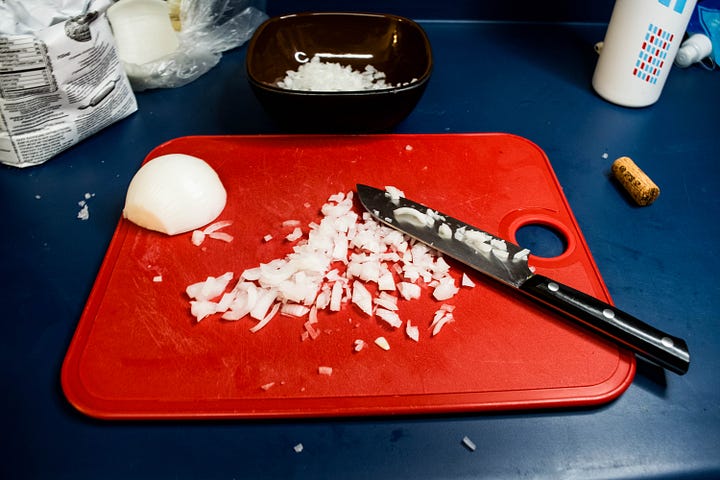

Cooking Risotto alla Milanese
If you’ve never made risotto before, you’re in for a treat. It’s a really simple dish that just takes a little love and patience — especially since you’re starting off this meal by cooking pane pugliese.
Pane pugliese is basically a kind of rustic, simple bread that isn’t hard but does require a lot of waiting. (That’s the theme for this edition of Grand Prix Gastronomy, if you haven’t guessed.) Basically, you’ll begin this recipe by making a biga, or starter, of yeast, water, and flour. It’s pretty much a saltless and ultra-spongy dough that serves as an additional rising agent for your bread, much in the same way a sourdough starter does. You combine the ingredients, then let them rise for at least six hours, but for as many as 24. Here in a heat-soaked Texas, I let mine rest for about 16 hours, which was more than enough time to end up with a webby dough.



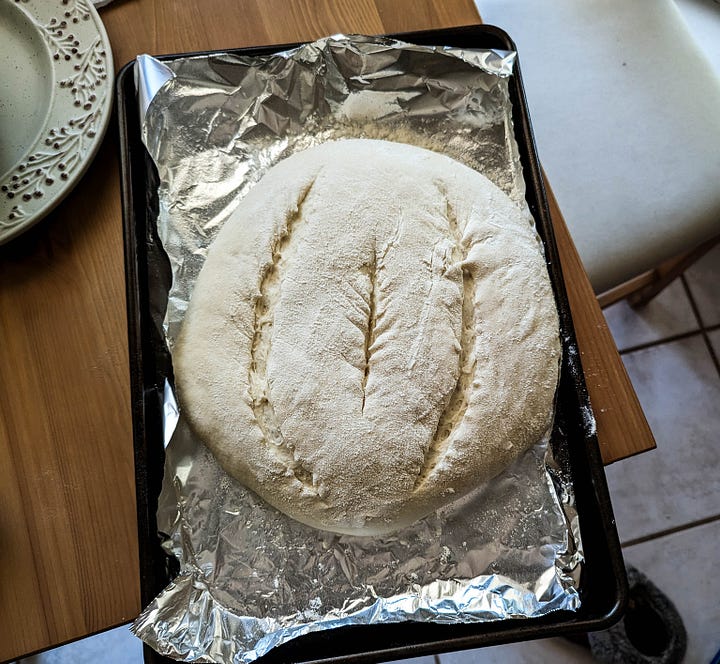
That done, you’ll stir up some more yeast and water for your pane pugliese proper; then, add in some more water and some of your biga, then add your flour one cup at a time.
A word of the wise: this dough is massively sticky, so I would recommend using a mixer if you have one. I used my hands, and it was really challenging to work with; I absolutely would not have been able to survive without the nonstick silicon mat my mom bought me for Christmas; with a little bit of flour on top, I was golden.
You want this dough wet, though, because that’s what makes it so damn good. Once you’ve stirred in the flour, do your best to work with the mess at hand to knead out the worst of the flour lumps, until the dough feels smooth and elastic. Then pop it in an oiled bowl and let it rise, anywhere from three to 15 hours. When it’s risen, divide the dough in two, shape it, then let it rise one final time before popping it in the oven.
That’s when I transitioned to my antipasto salad. I’ll let you consult the recipe if you’re interested, but basically, you need to let some mini mozzarella balls marinate in olive tapenade and pepperocini, so the more time you give it, the better. Then, you can stir together your dressing and your salad base. Assemble that all just before serving for the best results!


And then: the risotto. The recipe I linked doesn’t really give you enough context in terms of timing, so carve out about two hours to really make this dish its best; you do not want to rush!
Before you begin, chop up one small onion, then skin and crumble up some uncooked luganega, or Italian pork sausage. In a hot pan, toast some saffron strands, then grind them into a powder.
In a separate pot, add your beef stock and let it come up to just under a simmer.
Then you can fry up your onion in some butter and oil, then add your pork sausage and cook it mostly through. At this point, you’ll add some dry white wine and let it cook off a bit before putting in your rice. You want to cook the rice before adding any additional liquids; it’ll soak up the wine and butter and oil, turning a little translucent in the process. When it starts to stick to the pan, you know you’re ready to start adding stock.
The recipe isn’t clear on this, so I will be: you’ll add a ladleful of stock at a time, stirring your rice, onion, and sausage mix until the rice has absorbed all the liquid. Then you add another ladle of stock. Basically, this helps release all of the rice’s starch and enables it to soak up more liquid, which creates that creamy, gooey texture you want from a risotto.
This is also a great opportunity to experiment with your taste buds. I really recommend trying the rice every few minutes to see where you’re at with it. If the rice is still hard or chalky in texture, it isn’t done. If it sticks to your teeth, it still needs more liquid. If you’re lacking the punch of salt, pepper, or saffron, add more as you go (just note that the parmesan you add at the end will provide a really solid hit of salt; don’t be conservative, but don’t salt your risotto to perfection before you’ve added the cheese).
When you’ve used up the stock, stir a pat of butter and a heap of parmesan cheese into your risotto, stirring until it’s a melty, gooey, cheesy extravaganza. Pop that on a plate with your pane pugliese, then serve with your antipasto salad and a nice glass of nebbiolo d’alba, which will help cut through the thickness of the risotto.
So, What's the Verdict?
Oh my goodness. Oh my damn. I’ve had a good risotto before, but I’ve never actually tried making the dish entirely by myself — and my god was it good. It was so good that I honestly wasn’t too mad that I discovered after the fact that I had forgotten to record the entire risotto cooking process that took place on the stove, since it meant I had an excuse to whip up the dish again in the very near future.


I was so happy, and that was compounded by how simple the dish was to make. Yes, you do need to spend a lot of time stirring and pouring and stirring and pouring, but it’s a fairly mind-numbing process. Turn on some of your favorite music and carve out the time to enjoy a slow, meaningful cooking process. It’s highly worth your time. Every single bite of the risotto was sheer bliss, and that was because I made sure I’d approached each and every step with care.
While I was a little disappointed with my antipasto salad (because I did not read the directions and added my mozzarella balls, marinade and all, right into the beginning of the salad), the pane pugliese was a treat. I still have a lot of work to do when it comes to the art of making bread; my loaves burned a bit on the bottom before I was ready to take them out, and they were still a little bit dense — but they were a massive improvement from some of my other yeasted experiments. The crust was crisp and the interior was soft. It had a decent gluten structure and plenty of airy pockets. It wasn’t fully where I wanted it to be, but I’ll be damned if I wasn’t close! It’s been a legitimate delight to see just how quickly I’ve been able to hone my bread making craft when I decided to regularly bake loaves. I’m already looking forward to the next baking adventure.
Let's Chat!
I'd like to give a big shout out to everyone who cooked along with me for the Dutch GP! I know I was a bit skeptical of the dish, so it bring me immense joy to know that yall were determined to whip up something tasty!
If you want to stay tuned…
Here are all the relevant links in one place, if you want to subscribe:
All Grand Prix Gastronomy-related content will be free — but if you want to drop me a donation on PayPal, that’s always welcome.






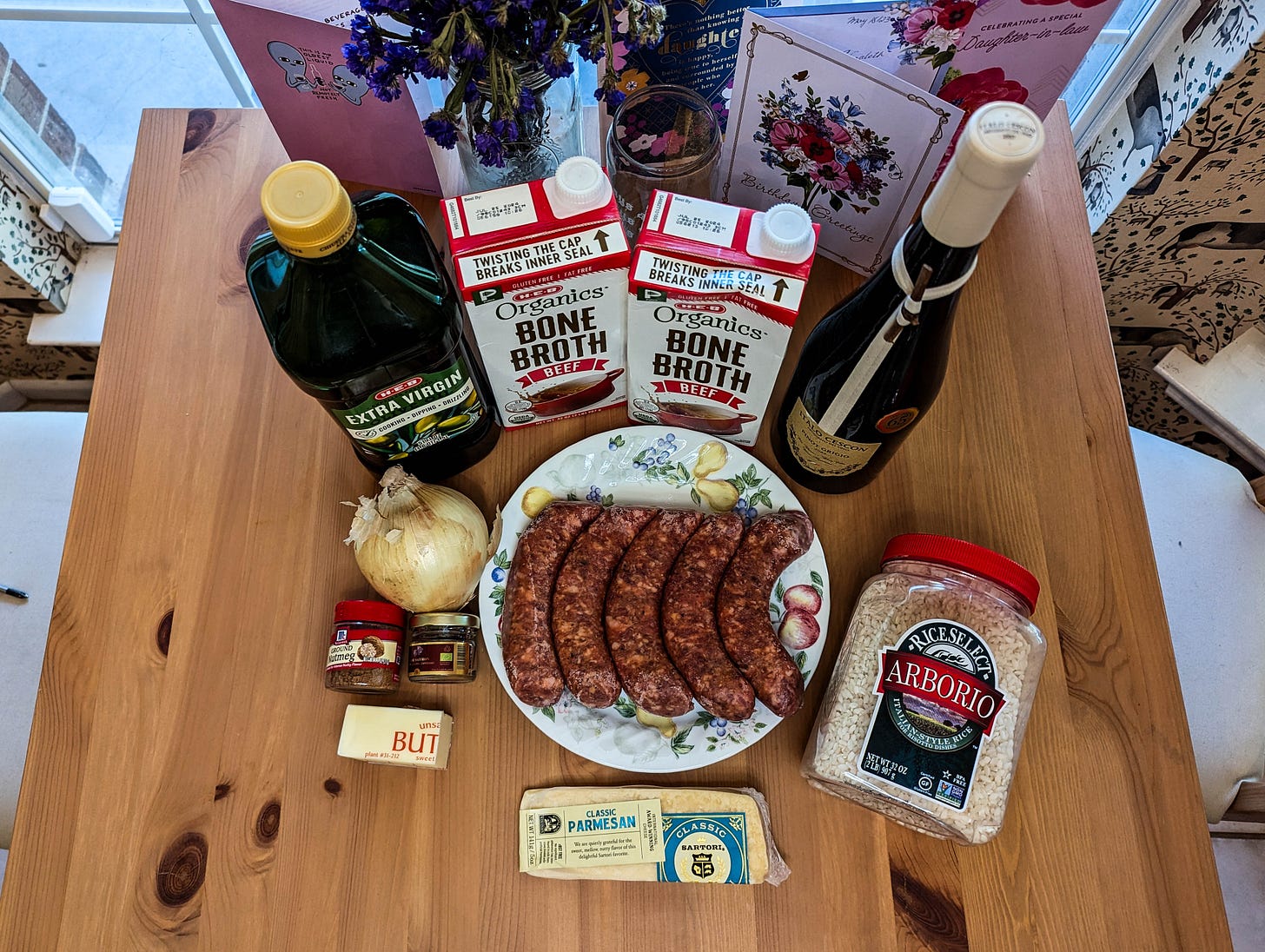
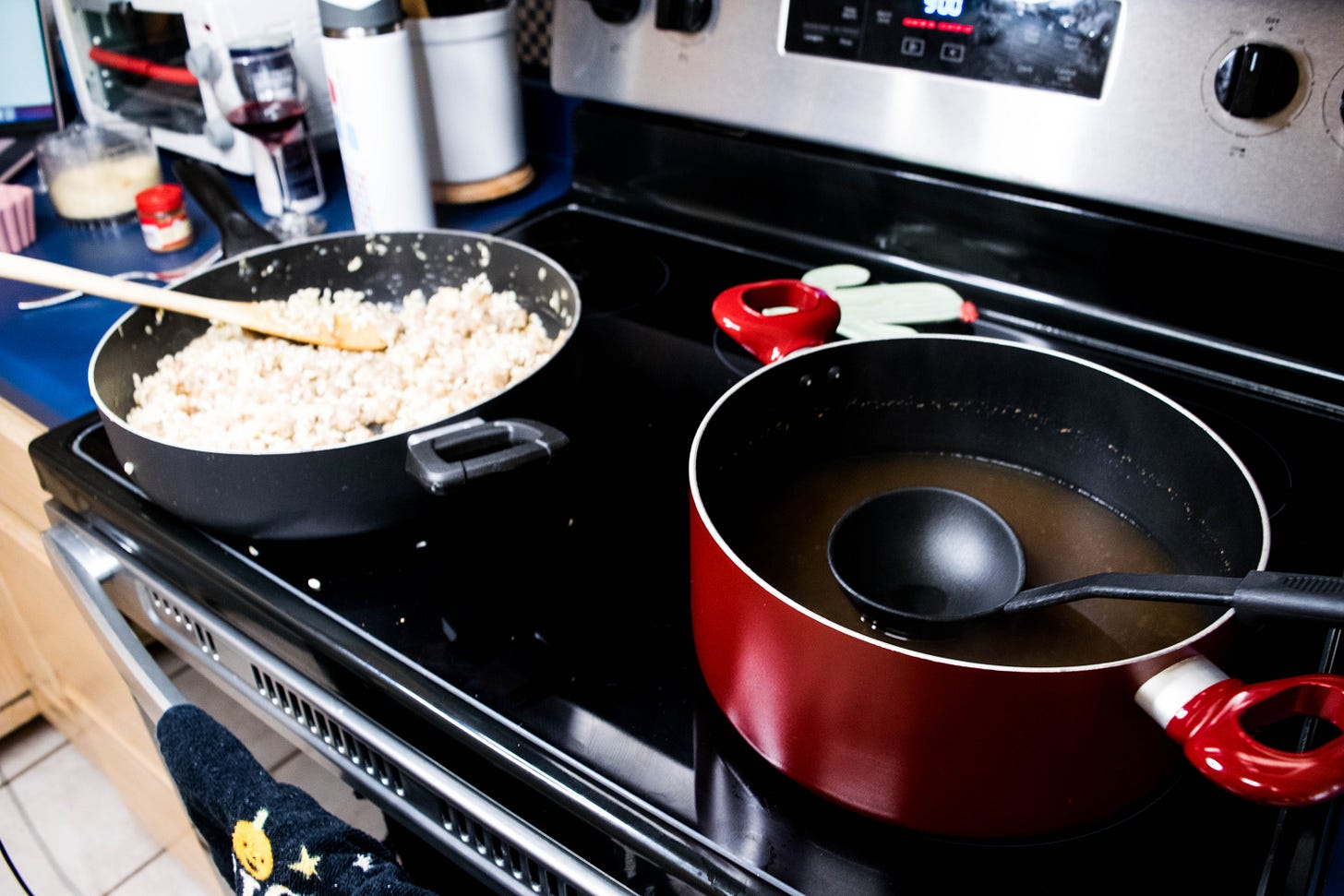



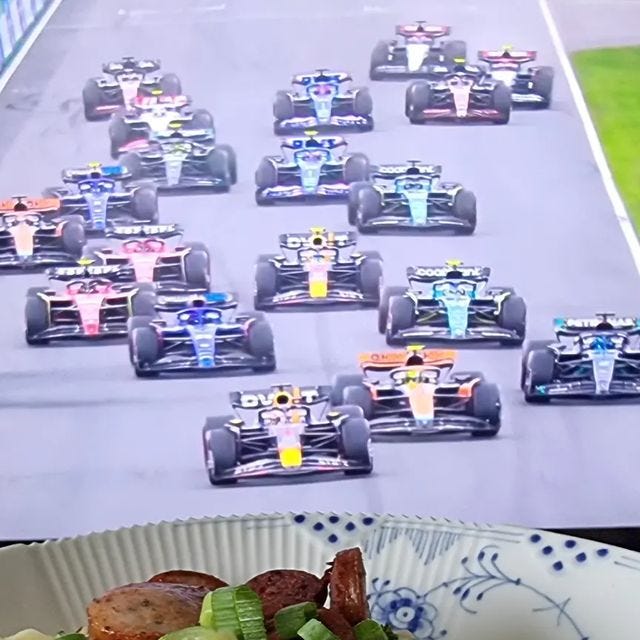

Terrific dinner! I've made a lot of 'normal' risotto over the years. This was *so* different and delicious. I'll try the bread another time.
Mine looks a bit more "soupy" than yours looks. Our local Italian resto serves as my model.
Good stuff! I've changed my email to put you in the primary reading list.
Thanks
Keith